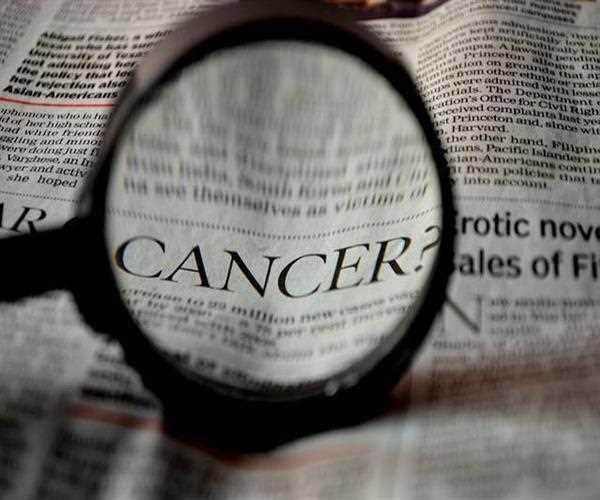
25-Jul-2022
Types of Cancer Treatment
Chemotherapy (chemo)
This powerful drug stops cancer from spreading, slows its growth, or even kills cancer cells. It can cause side effects because it kills rapidly growing cells in your body, including those in the blood, mouth, digestive system, and hair follicles. There are over 100 types of chemotherapy drugs. Your doctor will choose the best one for your type of cancer. You can take it as a pill or capsule, rub it into your skin as a cream, or get it as an injection or intravenous at home or in the hospital.
External beam radiation
This treatment attacks cancer cells with high-energy particles (proton or particle therapy) or waves (X-rays). It kills or damages cells in a specific area instead of the entire body. The most common type comes from a machine outside of your body. It is called external beam radiation.
Internal radiation
You will likely hear your doctor mention brachytherapy. They will put radioactive implants the size of a grain of rice into your body where the tumor is. The radiation kills cancer cells. This treatment will make you radioactive for a while, so you may need to avoid other people until it's done.
Open surgery
Treating cancer with surgery works best if you have a solid tumor in one area. It often cannot cure cancers that have spread or cancers that are in the blood, such as leukemia. The surgeon makes an incision in your skin with a scalpel or other sharp tool and removes as much of the tumor as possible. They may also remove lymph nodes and other tissues for testing. This is called open surgery.
Minimally invasive surgery
The purpose of this procedure is the same as open surgery: to remove tumors and, if necessary, tissues and lymph nodes. Instead of one large incision, the surgeon makes several small ones. You stick a tube with a small camera in one cup to see inside your body and tools in the others. This is called laparoscopic surgery. It generally has a shorter recovery time than open surgery.
Other operations
Cryosurgery uses very cold nitrogen or argon to freeze abnormal tissue. Can be used to treat early-stage skin cancer, retinoblastoma, and precancerous patches on the skin or cervix. Photodynamic therapy is laparoscopic surgery in which drugs are placed near tumors. The light activates the drug and kills the cancer cells.
Laser surgery uses powerful beams of light to incise your skin. It is good for very small areas. Lasers can also sometimes shrink tumors.
Stem cell transplant
These are cells from your blood and bone marrow that have not yet reached their final shape. The doctor uses them to replace cells in your bone marrow that other treatments kill. This means that you can receive higher doses of these therapies. Sometimes stem cells can find and kill cancer cells. They receive stem cell transplants through a catheter, similar to a blood transfusion.
Precision medicine
This new field, also called personalized medicine, uses your genetic makeup and other things to find the best treatment for your cancer. With the 'one size fits all' model, your doctor chooses the option that is best for most cancers like yours. Precision medicine helps take the guesswork out of the selection process. It is not used for all forms of the disease. Many people who have it participate in clinical trials.
Targeted therapies
These are usually combined with other treatments. They are a powerful drug, like chemotherapy, but instead of killing all the rapidly growing cells, they target the parts of the cancer cells that make them different from other cells. Targeted drugs block the growth of blood vessels around cancer cells or turn off the signals that make cancer cells grow. They can also tell your immune system to destroy them or change their proteins so that they die.
Hormone therapy
Also called endocrine therapy, it targets tumors that use hormones to grow. There are two types of therapy: one that stops you from making hormones and one that stops hormones from working as they should. You can take them as pills or take them by injection. Sometimes you can have surgery to remove a hormone-producing organ, such as the ovaries or testicles. Doctors use hormone therapy with other methods to shrink tumors before surgery or treatment or to kill cancer cells that have spread to other parts of the body. It can also reduce the chances of cancer coming back.
Genetical therapy
This treatment uses a special vector, usually a virus, to deliver RNA or DNA into your living cells. Your doctor will take some of your cells and place the genetic material inside in a lab, or give you the carrier directly. The damaged cells then kill cancer cells, slow their growth, or help healthy cells fight cancer better. Doctors don't use this method much yet, but several types of gene therapy are available for specific diseases.
Immunotherapy
This type of biological therapy, or biotherapy, uses your immune system to fight cancer. Either it boosts your immune system or it marks cancer cells so your immune system can find and destroy them more easily. You can get it orally as a pill, into a vein intravenously, by rubbing a cream on your skin, or through a catheter directly into your bladder.
Types of immunotherapy
Immune checkpoint inhibitors are drugs that slow down your immune system to help it find and attack cancer cells.
Cancer vaccines trigger an immune response against cancer cells so your body is better able to attack them. They can also prevent certain types of cancer.

Student
An inquisitive individual with a great interest in the subjectivity of human experiences, behavior, and the complexity of the human mind. Enthusiased to learn, volunteer, and participate. Always driven by the motive to make a difference in the sphere of mental health - and normalize seeking help through a sensitive and empathetic approach
Join Our Newsletter
Subscribe to our newsletter to receive emails about new views posts, releases and updates.
Copyright 2010 - 2025 MindStick Software Pvt. Ltd. All Rights Reserved Privacy Policy | Terms & Conditions | Cookie Policy